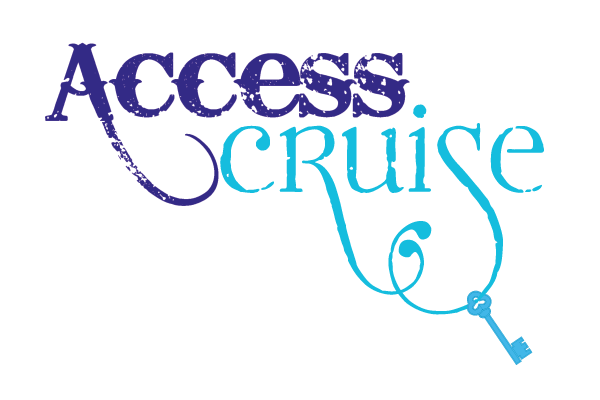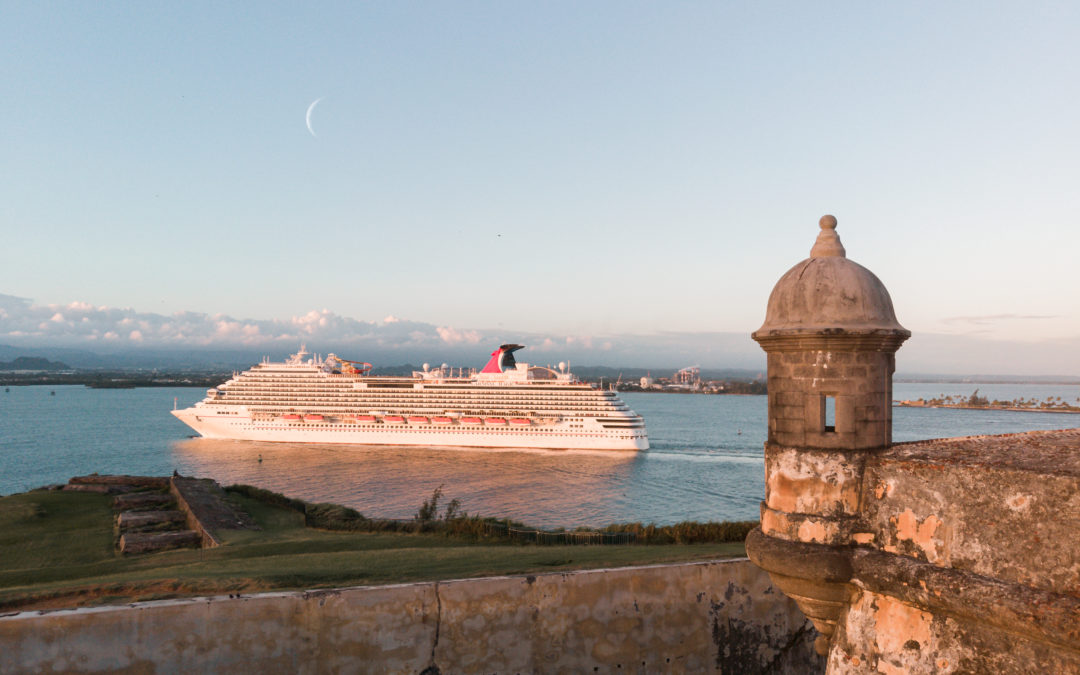As lockdowns continue and social distancing guidelines remain in place, everyone is itching to get out, and a vacation getaway will be topping the list. After several weeks of being at home, many of us are looking forward to getting away, but not too far away, and that makes Puerto Rico the perfect choice. Visiting Puerto Rico from the U.S. mainland requires no passport, no transatlantic flight, no currency exchange and everyone on the island speaks English. It’s a tropical haven filled with history, culture, art, music, and some of the most luscious Caribbean cuisine.
Let’s start with the world-famous capital city of San Juan located on the north coast. Arriving to Puerto Rico by sea will undoubtedly give you a stunning view of Castillo San Felipe del Morro, aka El Morro. The fortress was built between the 16th and 18th centuries during Spanish colonial rule and was designed to guard the entrance to the San Juan Bay and defend the port city of San Juan from seaborne enemies. It survived 3 attacks by the British and one by the Dutch. Today El Morro’s esplanade is a place where friends and families gather, and visitors can take in majestic views of the Caribbean Sea. El Morro was named a UNESCO World Heritage site in 1983. History buffs will appreciate the El Morro visitor’s center where exhibits from different time periods are displayed. Video presentations, authentic documents and photographs provide details of the fort’s history. Visitors can explore the fortress on their own or have a park ranger provide an hour-long guided tour. Just beyond the walls of the fortress is Old San Juan, a cultural and historic treasure chest. There are a number of excellent walking tours and food tours of Old San Juan, and there’s no better way to get a feel for a place than a walking/food tour. Just outside of Old San Juan is the Bacardi Distillery and the famed Condado area filled with hotels, restaurants, shops and casinos. Two of the most iconic places in Puerto Rico, El Yunque Rain Forest and Luquillo Beach, are just outside of San Juan. Plan a few days so you don’t miss any of it.
On the eastern tip of the island is Fajardo, a mecca for lovers of water sports. Sailing, parasailing, catamaran charters and exploring nearby island cays are some of the options this town offers. Fajardo has bragging rights to one of the three bioluminescent bays in Puerto Rico where kayaking and exploration of marine life top the list of must-have experiences. Visitors can take ferries to the neighboring islands of Culebra and Vieques. Culebra is home to Flamenco Beach, one of the most famous and breathtaking beaches in the world. Vieques is renowned for Mosquito Bay, another bioluminescent bay, where microorganisms give the water a blue-green glow. Nighttime boat tours to the bay are bucket list items. Secluded beaches and snorkeling should be added to your Vieques “To Do” list. A significant part of the island is dedicated to the Vieques National Wildlife Refuge. You might see wild horses roaming the countryside.
On the southern coast is Ponce, a well-preserved old town with grand mansions built in the unique Ponce Creole architectural style. The Museo de Arte de Ponce is recognized for its huge European and Puerto Rican art collections. The seafront boardwalk of Paseo Tablado La Guancha is lined with restaurants and bars. West of the city visitors can take a ferry to Cayo Aurora, also called Gilligan’s Island. A tiny island which is part of the Biosphere Reserve of Guánica, it’s a popular spot for swimming, snorkeling, beach-bumming, and kayaking.
Inland, about an hour north of Ponce is Estatal de Toro Negro, a lush forest filled with waterfalls and hiking trails. There are 18km of trails for hiking or swimming in the cold ponds of the falls. Climb to the observation tower at the top of Cerro Doña Juan for some of the most spectacular views in Puerto Rico. Campers can pitch a tent and spend the weekend in the woods.
Keep traveling west along the coast and you’ll find Boqueron Beach, one of Puerto Rico’s seven Blue Flag beaches. The Blue Flag designation is given to beaches that meet high standards for quality, safety, and environmental education and information. Just inland is the city of Cabo Rojo, offering vibrant nightlife filled with restaurants and bars, excellent food and live music.
Just off the west coast is Isla de Mona, or Mona Island, commonly referred to as the Galapagos of the Caribbean. It’s protected by the Puerto Rican government and is uninhabited, so only the adventurous need apply. The lineup includes hiking, camping, caving, snorkeling and diving the island’s colorful coral reefs, fishing and hunting non-indigenous animals such as pigs and goats. Its remote location and lack of invasive light pollution make it ideal for star gazing. If you’re planning a visit, bring your own supplies, food, water and accommodations. There are no island facilities so be prepared.
On the west coast is the city of Mayagüez, home to one of the most elegant plazas on the island. Plaza de Colón is a cultural hub and Christmas is one of the best times to visit. Regular activities are planned for the weeks leading up to Christmas. The Plaza is filled with festive lights and celebrations include live music, food and crafts. Mayagüez is also where you’ll find Teatro Yagüez, a beautifully restored theatre and active performing arts center, listed on the U.S. National Register of Historic Places. Pro tip: our sources tell us that PR-102 from Cabo Rojo to Mayagüez is a foodie paradise.
Planning a trip to Puerto Rico will be an exercise in compromise. You might not get to see and do it all so choose wisely. At least it’s close to home – you can go again, and again, and again.
Photo by Discover Puerto Rico

